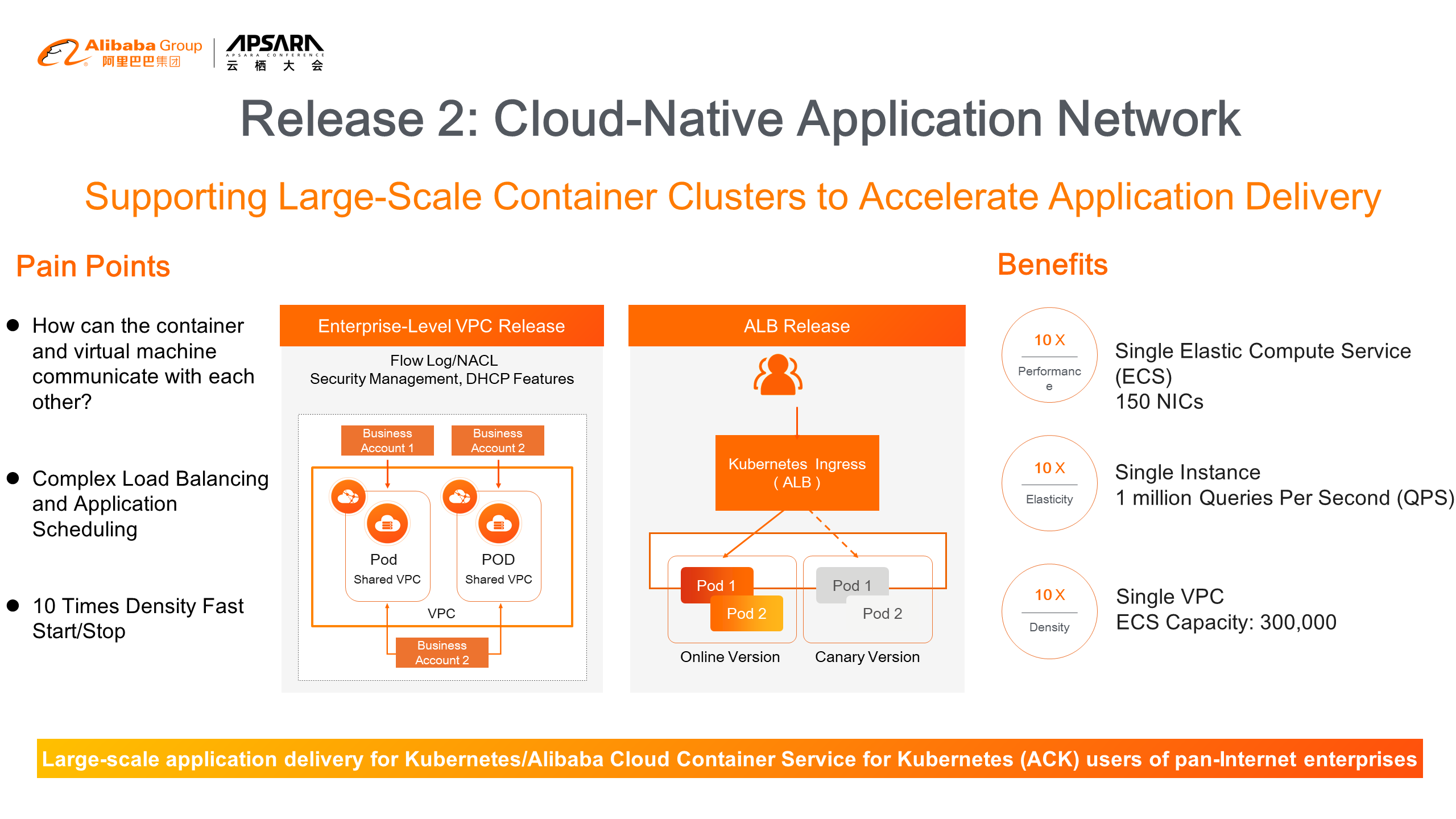SLB is an abbreviation of Alibaba Cloud Server Load Balancer. SLB is an Alibaba Cloud service that can distribute network traffic to a group of backend servers to increase the throughput of your applications. You can use SLB to prevent service interruption caused by single points of failure (SPOFs) and improve the availability of applications.
Alibaba Cloud provides an SLB service that is fully managed on the cloud. This service is out-of-box, high-throughput, stable, and reliable. You can dynamically scale SLB resources and pay for these resources on demand. Alibaba Cloud SLB is intended for balancing the heavy load of hyper-scale Internet applications. For example, you can use SLB to handle traffic spikes during large-scale online campaigns or improve the availability of Internet of Things (IoT) applications that run with a great number of concurrent connections. SLB saves the expenses on backend servers that are used to encrypt and decrypt data. It can redirect HTTP requests to HTTPS requests or redirect HTTPS requests back to HTTP requests while the backend servers only need to process HTTP requests.
Alibaba Cloud provides two types of SLB instances that run at the transport layer (Layer 4 in the OSI model) and application layer (Layer 7 in the OSI model). The Layer 4 SLB instances use Transmission Control Protocol (TCP) and User Datagram Protocol (UDP) listeners to distribute network traffic. Each Layer 4 SLB instance supports up to tens of millions of concurrent connections and millions of new connections per second.
Layer 7 SLB instances run at the application layer (Layer 7 in the OSI model). Layer 7 SLB instances support various application protocols, such as HTTP, HTTPS, HTTP2, WebSocket Secure (WSS), Quick UDP Internet Connections (QUIC), and Google Remote Procedure Call (gRPC). Each Layer 7 SLB instance can handle up to one million queries per second (QPS). Layer 7 SLB instances support SSL, HTTPS, and TLS offloading.
Compared with hardware load balancing solutions that require a large up-front investment, Alibaba Cloud SLB is highly scalable and provides pay-as-you-go services. It can balance the heavy load of applications during large-scale online campaigns. Compared with self-managed open source load balancing solutions, Alibaba Cloud SLB has an experienced and professional technical support team that offers 24/7 services. This ensures service stability and relieves you from operations and maintenance (O&M) work.
ELB is an abbreviation of AWS Elastic Load Balancer. AWS launched the ELB in the spring of 2009. ELB is a software-based load balancing system that can be set up and configured in front of a series of AWS Elastic Compute (EC2) instances. The load balancing system acts as a single point of entry for users of EC2 instances and distributes incoming traffic through all machines available to accept requests.
In addition to having a single point of entry, the ELB also plays a crucial role in improving the tolerance of faults for the services it faces. The AWS ELB periodically performs a health check of all cases that have been registered with it, and only drives traffic to those machines that respond to the health check as active and safe.
ALB is an abbreviation of Alibaba Cloud Application Load Balancer. Positioned at the application layer, ALB provides superior performance. It is secure, reliable, cloud-native, and out-of-the-box. It supports auto-scaling, the Quick UDP Internet Connection (QUIC) protocol, content-based advanced routing, built-in Distributed Denial of Service (DDoS) protection, cloud-native applications, flexible billing, and other product capabilities. It meets many diversified application-layer load requirements.

The Benefits of ALB are as below:
When seeing the letters ALB, many people will think of the classic SLB service. Alibaba Cloud Server Load Balancer (SLB) released nearly ten years ago, providing users in various industries with powerful and stable load balancing capabilities. It distributes large amounts of concurrent traffic, prevents Single Point of Failures (SPOFs), and improves service availability.
However, as enterprises and Internet businesses develop rapidly, business forms and demands are constantly changing. As a result, traditional load balancing cannot meet the requirements of many business scenarios. The Alibaba Cloud ALB comes up to meet the requirements for high performance, elasticity, multi-protocol layer-7 forwarding, security, and cloud-native, such as Internet service, big e-commerce promotions, audio and video service, mobile Internet applications, gaming, financial services, and cloud-native applications.
The ELB is an AWS simple load balancer, most AWS clients are familiar with this product and have used it in the past since it is easy to configure, and given its long history as a product.
The network is critical for service migration to the cloud. As more complex enterprise applications are migrated to the cloud, the requirements for cloud networks are becoming higher. The top priority is concurrent high-traffic scheduling and application load balancing capabilities. Among ELB, SLB and ALB choices, the ALB is high elasticity, security, reliability, and cost-effectiveness.
This article reviews the released Alibaba Cloud ALB and its focus on facilitating cost-effective application delivery.
In this blog, we will introduce the concept of load balancing and discuss how Alibaba Cloud can help you speed up your websites or apps.
Alibaba Cloud Server Load Balancer (SLB) distributes traffic among multiple instances to improve the service capabilities of your applications. You can use SLB to prevent a single point of failures (SPOFs) and improve the availability and the fault tolerance capability of your applications.
The SLB service uses instances as its basic units and provides metering data for the instance billing cycle. Fees are calculated based on length of time of load balancer rentals and network traffic.
The following prices are for reference only. The exact price will be based on the customized plan you choose.
Pay-As-You-Go
Fees are calculated based on length of time of load balancer rentals and network traffic.
Increased traffic, often results in a delayed response from web servers or even a halt in service. Load balancing lies in "sharing." When massive traffic is detected, the traffic is distributed to multiple servers to improve the external service capability of the website and avoid the impact of a single point failure. In this online course, we teach the basics of load balancing, principles and scenarios, and master cloud platform load balancing features and usage.

2,599 posts | 769 followers
FollowAlibaba Clouder - April 27, 2021
Alibaba Cloud TC Content - July 27, 2021
JDP - October 8, 2021
JDP - August 19, 2021
Alibaba Cloud Native - February 15, 2023
Alibaba Clouder - March 18, 2021

2,599 posts | 769 followers
Follow Server Load Balancer
Server Load Balancer
Respond to sudden traffic spikes and minimize response time with Server Load Balancer
Learn More Simple Application Server
Simple Application Server
Cloud-based and lightweight servers that are easy to set up and manage
Learn More Web Hosting Solution
Web Hosting Solution
Explore Web Hosting solutions that can power your personal website or empower your online business.
Learn More ApsaraDB RDS for SQL Server
ApsaraDB RDS for SQL Server
An on-demand database hosting service for SQL Server with automated monitoring, backup and disaster recovery capabilities
Learn MoreMore Posts by Alibaba Clouder
Start building with 50+ products and up to 12 months usage for Elastic Compute Service
Get Started for Free Get Started for Free